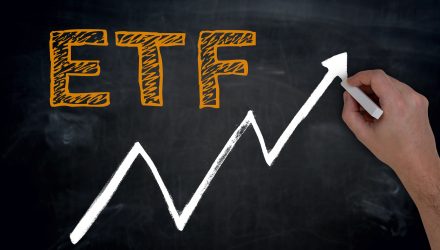By Todd Rosenbluth, CFRA
“An ongoing shift to passive investing through ETFs” – this is a phrase that gets used so frequently that it is not surprising that many investors have ceased paying attention to it. One might even be left with the false impression at all ETFs are passive. Buyer beware!
Over the past five years, assets in ETFs nearly tripled and ETF providers are increasingly launching non-indexed ETFs or indexed ETFs with a twist that makes their underlying holdings less static many investors may initially think without further investigation.
In our discussion with asset management industry experts for CFRA’s ETF video series, https://newpublic.cfraresearch.com/etf-videos/ , we covered a range of ETF-related topics. One common theme was ensuring advisors and investors understand what’s inside the growing number of ETFs.
Doug Grim, senior investment strategist at Vanguard Group, explained to CFRA in a recent video that investors have been rotating out of active mutual funds in search of lower-cost investments. Grim thinks in general lower-cost products will continue to gather assets; watch his video here: https://newpublic.cfraresearch.com/move_to_smart_beta/
CFRA thinks advisors and investors correctly focus on expense ratios when selecting both mutual funds and ETFs. Our ratings incorporate this key cost metric. However, we agree with Grim that with ETFs it is particularly important to look under the hood as he correctly points out that these index-based products can be constructed in a variety of different ways.
With value ETFs for example, there are products constructed based on a combination of style and market capitalization. Meanwhile, other products are constructed based on their value factor score. The exposure these funds provide is distinct.
Vanguard offers multiple products that, at first blush, sound like they would hold similar stocks. For example, Vanguard S&P 500 Value ETF (VOOV 109 Overweight) includes book-to-price, earnings-to-price and sales-to-price criteria to sorting the S&P 500, while Vanguard Value ETF (VTV 108 Overweight) also uses those three and adds in forward earnings-to-price and dividend-to-price metrics.
Microsoft (MSFT 108 ***) is the largest holding in VTV but is not a constituent in VOOV as the stock is considered growth, based on the S&P 500 Style indices.
While CFRA does not use a three-year record in its ETF rating, VTV’s 11.1% annualized total return as of July 24 significantly outperformed VOOV’s 9.2%. To us, this performance variance highlights the importance of understanding what makes them different.
Meanwhile, iShares Edge MSCI USA Value ETF (VLUE 85 Overweight) is an example of one of the smart beta ETFs weighted based on their value factor scores using historical earnings, revenue, book value and cash earnings metrics. However, VLUE is built with sector neutrality and as such, its 25% weighting in technology is considerably higher than VTV (15%) and VOOV (7%), which do not incorporate sector weightings.
The index behind VLUE is rebalanced on a semi-annual basis, VTV is quarterly, and VOOV is annually.
